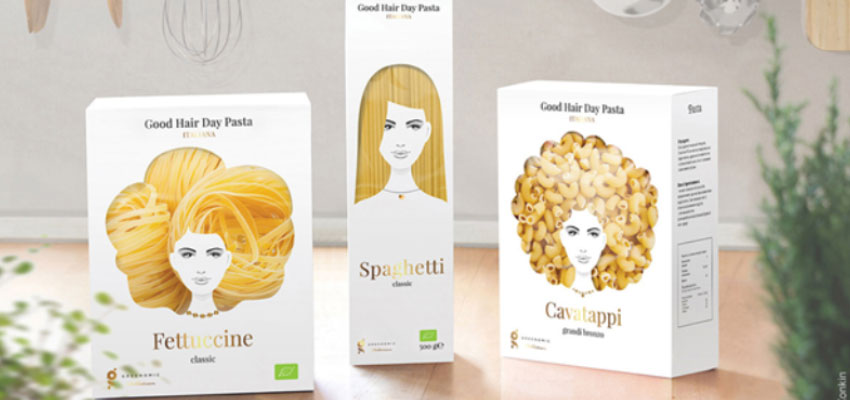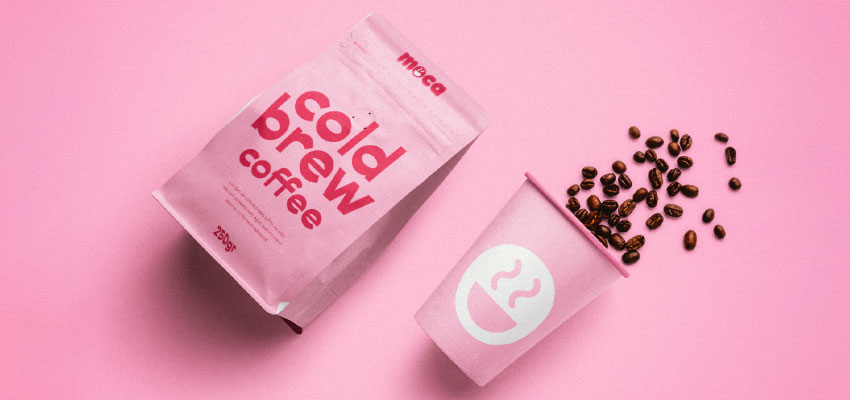
When looking at luxury packaging boxes or custom boxes, you must have encountered embossing or debossing, the custom patterns in which printings are carved underside or upper side.
Packaging researchers and the general audience often ask about the difference between embossing and debossing. Businesses belonging to packed products ask for the best option that will have a big impact on the businesses.
Here we have researched in detail to answer the emboss vs deboss debate to answer all the major questions, better options, the difference between these two, and their role in packaging.
So, let us dive into the detailed overview.
What is Embossing?

Before diving into the difference, it is better to understand what embossing is. Embossing is a printing or finishing technique where a design is molded and stamped on the underside of a material to create a raised effect on the surface. A raised effect on the surface is called embossing.
Through this process, the design stands out. It adds a 3D effect. It is perfect for detailed and decorative designs. This also can be combined with other techniques like foil stamping to create a more striking appearance.
Here are the embossing techniques:
- Dimensional Embossing
- Scorching Emboss.
- Blind Embossing
- Fluted Embossing
- Pastelling Emboss
- Combination Embossing
- Glazing Emboss
What is Debossing?
Coming to debossing. It is a printing technique where a design is stamped into the surface of a material that creates a downward effect. Debossing is opposite of the embossing, creating a downgrade effect on the material unlike embossing where an upward effect is created.
Major Differences Between Embossing and Debossing
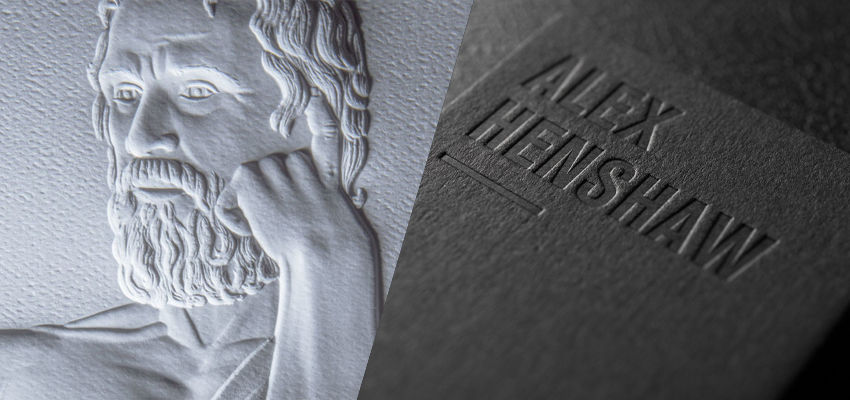
The key difference between embossing and debossing is how the design appears on the material. Embossing raises the design above the surface while debossing lowers the design to the surface.
Both methods add texture and enhance the look of the product. These add a 3D effect to the packaging, making it more visually appealing. When it comes to cost and easy process, embossing is more expensive than debossing. This is because embossing requires an additional metal piece to be made for the process.
How Do Embossing and Debossing Processes Work?
Do you really know how embossing and debossing processing work in reality? Here is the real process.
The embossing process uses a metal die to press a design from underneath the material. It creates raised edges that stand out. Embossing involves a male die which carries the raised design and a female die. Then the machine presses these dies together to imprint the design onto the material.
However, in debossing the die presses down on the top of the material. By which notches are formed on the material. In both methods, durable metal plates are used. These plates can be reused for multiple projects.
Uses of Embossing and Debossing
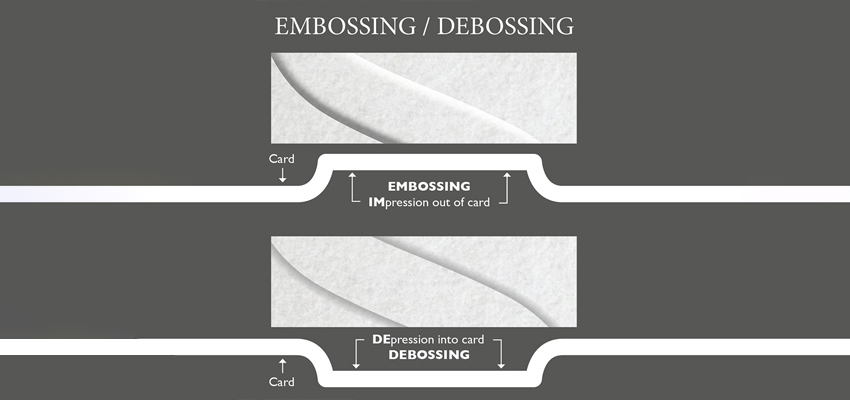
What is the use of embossing and debossing? This question must be revolving in your mind. Let me tell you.
Embossing and debossing work particularly well on thicker materials, like corrugated or rigid boxes. You can also mix these techniques with foil stamping to add a striking visual effect, such as metallic gold, silver, or other solid colors.
Their use can be enormous, but always use these techniques on thicker materials. Every thick material box can be printed with embossing or debossing.
Most Crucial Factors Before Embossing or Debossing
Like every process, there are also a few considerations before attempting embossing or debossing. The first thing is to decide exactly where the graphic will be placed on the package to ensure it fits perfectly. It is a must to select or decide the area before diving into the printing.
Another factor is to convert graphics. Keep in mind that graphics should be converted to vector format before embossing or debossing. Vectors keep the image clear and sharp, no matter the size, ensuring a high-quality finish. Use software for converting graphics patterns.
Why are Embossing and Debossing Important?
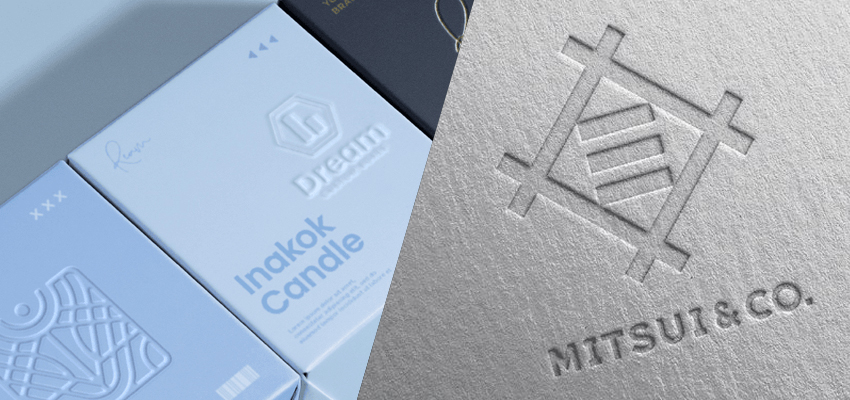
Embossing and debossing are crucial printing techniques in printing and finishing. They add a touch of luxury and luxury to any packaging with 3D effects. These printing techniques create a unique feel that customers can touch, which makes the product more memorable. The printed fonts are touchable, giving a memorable feel.
These two techniques emphasize the printed logos or names, giving brands the opportunity to create a strong image of their duct. Plus, embossing and debossing are highly durable and strong. They are wear and tear resisting, keeping design long lasting for longer periods.
Die Types and Styles of Embossing/Debossing

Embossing or debossing, both have many types of die. The levels of die change, giving different types of effects using different types of embossing/debossing dye. You must want to know about these die types. So, here are the common types of die. Single-level die alters the surface of the material at one level. It is the most common type of die. Then comes the multi-level die. This involves several layers of depth for a more detailed effect.
The bevel-edge creates a design with edges angled between 30 to 60 degrees. And then comes the chisel. It forms a "roof" or v-shaped design. This is usually used for debossing. The textured is a single-level die that has a textured surface.
The rounded die produces designs with rounded corners. It is used mainly for logos and typography. Then at last it is sculptured. It is a custom, hand-made die that creates a detailed, sculpted design. Sculpted is the most expensive die option.
Embossed/Debossed Paper Styles
There are three types of paper styling in embossing printing technique and debossed printing technique. Blind embossing uses no ink or foil. It is best for clean designs. The registered emboss combines embossing with ink or foil for a refined look. The last one is a combination embossing that merges foil stamping with bling embossing to create a 3D effect.
Common Metal Plates for Dies
The metal plates are three types used in embossing or debossing. One is magnesium, the second copper, and the last one is brass.
Magnesium is the most affordable and softest plate used for single-level die. Copper is a strong option but is also used for single dies. The brands are the sturdiest and most expensive. It is used for complex and multi-level dies.
Importance of Embossing and Debossing for Product Packaging

Embossing and debossing are both crucial printing techniques for custom product packaging. When custom boxes are printed with embossing or debossing techniques custom packaging gets enormous benefits, such as:
Luxurious and Sophisticated Appearance
Embossing and debossing give the packaging a high-end look and luxury feel. These techniques make packaging boxes more luxurious and premium. Printed with these techniques will surely show how much you care for the products, increasing product value and creating customers' trust.
Eco-Friendly Design
The world is behind sustainable packaging options, and all the decorative and luxury options are not eco-friendly. However, embossing and debossing are eco-friendly options, ensuring the custom boxes are sustainable too.
Branding and Logo Display
As mentioned earlier, these techniques are used to emphasize the printed fonts. The printed logos and brand names will stand out, adding value to the marketing and promotion of the products.
Highlight Important Information
Brands can highlight important information on the packaging boxes such as sales, discounts, highlighted information, and cautions with embossing and debossing, creating value and ensuring customers make informed decisions.
Visual Appeal and Customer Engagement
Embossing and debossing are best for creating luxury visuals and increasing the chance of customer engagement. The added texture increases the design's appeal to attract potential customers. With a sense of touch and a 3D feel, these make packaging more interactive and memorable.
Read More: A Detailed Insight into Aqueous Coating
Brand Differentiation
Embossing will help create a distinction between your brand and competitors with a strong and notable appearance. The embossed packaged products are easily noticeable.
High ROI
Attracting customers and creating luxury appeal, embossing and debossing printing techniques receive high ROI value. These prints generate high sales and increase brand value.
Final Thoughts!
Embossing and debossing are techniques with carved surfaces upward or downward. Brands can use any of the techniques, it totally depends on the needs and preferences. The choice is up to the brands.
If you want to ask experts for the choice and want to discuss your strategy or want to get embossed or debossed custom boxes, contact Your Box Packaging to create custom product boxes with embossing or debossing techniques to elevate your branding and product value.

